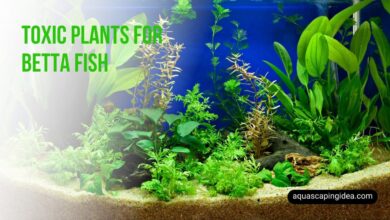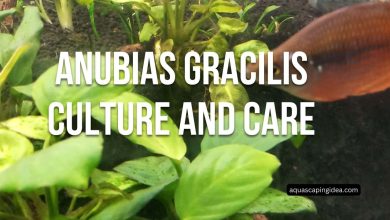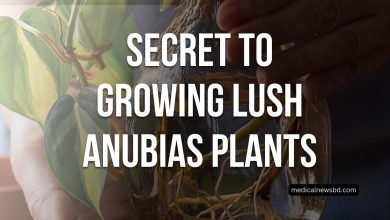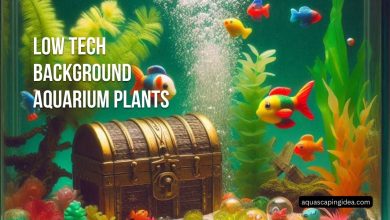
A vibrant splash of ruby red plants can make a striking addition to any freshwater aquascape. However, many species of red aquarium plants often lose their intense coloration over time in captivity. Maintaining the rich scarlet hues of these underwater specimens can be a challenge. With the right balance of lighting, nutrients, iron, CO2, and care though, your red plants can continue to exhibit deep, healthy red colors for years to come.
We’ll cover everything you need to know to maximize the red pigments in popular freshwater species like Alternanthera reineckii, Ludwigia repens, Rotala wallichii, and more. With a few adjustments to their environment and care, you can easily achieve a dazzling crimson canopy over your aquascape.
The Basics Behind Red Plant Coloration
Red aquarium plants get their distinctive color from pigments called anthocyanins. These water-soluble pigments are produced by the plants as a response to intense light exposure. However, for anthocyanins to develop properly, plants also require adequate levels of certain nutrients like iron, nitrogen, and phosphorus. Along with sufficient lighting and nutrients, supplying added carbon dioxide (CO2) can further enhance red coloration.
Finding the right balance between all these factors is key to bringing out the deepest red hues possible. The correct aquarium setup and attentive care gives these plants what they need to showcase their beautiful crimson colors.
Providing Optimal Aquarium Lighting
Arguably the most important element for maximizing red in aquarium plants is proper lighting. Bright illumination in the correct color spectrum triggers these plants to produce more protective anthocyanin pigments, causing leaves to take on a red tint.
When it comes to intensity, red aquarium plants need strong light to reach their full potential. Shoot for a lighting level of at least 50-60 PAR (photosynthetically active radiation) at the bottom level of the aquarium where plants are located. For comparison, high light tank parameters are typically considered 90 PAR and up.
Additionally, a lighting system with greater concentrations of light in the blue and red spectral ranges will further encourage red plant growth. This is why many planted tank owners choose full spectrum LED lighting designed specifically for planted aquariums. The adjustable RGB color modes allow you to tweak levels to achieve the optimal bloom of red in your underwater garden.
Supplementing with Red-Enhancing Nutrients
In addition to sufficient lighting, red aquarium plants require an adequate supply of certain nutrients, especially iron and nitrogen compounds. Without these constituents, plants are unable to produce the anthocyanins responsible for red coloration.
Iron is essential for the synthesis of chlorophyll and enzyme systems that facilitate anthocyanin production. Be sure to frequently dose a comprehensive plant fertilizer containing iron as well as nitrogen, phosphorus, potassium, and other critical nutrients. Alternatively, you can use iron supplements specifically formulated for aquarium plants to further augment levels.
Upping the red also requires an abundance of nitrogen. Nitrogen plays a key role in plant protein and DNA formation associated with growth and pigment production. Keep nitrogen levels steady by dosing fertilizers as directed, performing weekly water changes, and testing water parameters monthly. Shoot for a nitrogen level around 10-20 ppm, along with phosphorus at 1-2 ppm.
Injecting CO2 for Maximum Impact
To push red plant color to the next level, consider adding supplemental carbon dioxide (CO2). The CO2 will be utilized by plants during photosynthesis to produce additional energy and building blocks essential for growth and vibrant coloration.
When diffused into the aquarium water, heightened CO2 supercharges plant development, maximizing anthocyanin concentrations in red species. Just be sure to slowly ramp up CO2 levels and closely monitor your tank inhabitants. Adding CO2 can alter water chemistry substantially, so caution is warranted, especially in smaller aquariums.
For best results, use a specialized pressurized CO2 injection system with a bubble counter and pH controller. This allows you to precisely regulate the amount of dissolved CO2 to optimal levels. Aim for approximately 30 ppm, steadily measured by the controller throughout the photoperiod when lights are on. Also maintain pH between 6.4 and 6.8 for ideal utilization of added carbon dioxide.
Caring for Red Aquarium Plants
Once you have all the necessary components in place to encourage red pigments, focus on attentive plant care and maintenance to keep your underwater crimson canopy thriving. Be vigilant about pruning any dying or deteriorating foliage, as decomposing plant matter can fuel algae growth. Use clean scissors to regularly trim plants, pinching off tops to encourage bushy, compact growth.
It’s also critical to keep your red specimens free of algal growth and debris that can block light absorption. Gently wipe leaves once a week during water changes to eliminate any green spot algae or accumulation. This allows every leaf full access to the intense lighting which prompts anthocyanin production.
Lastly, watch for signs of nutrient deficiencies, using test kits to catch any drops in essential elements like nitrogen, phosphorus, potassium, or iron. Respond by increasing fertilizer dosing accordingly, targeting levels known to saturate growth of red pigments. With attentive care and quick corrective actions, your crimson canopy will flourish more vibrantly than ever!
Frequently Asked Questions
What are the most intensely red aquarium plants?
Some of the reddest freshwater species include Alternanthera reineckii, Ludwigia repens, Rotala wallichii, Ludwigia palustris, and the aptly named “red rombula”. These vividly colored plants are sure to inject some striking scarlet hues into your underwater layout.
How long does it take for red plants to achieve full color?
Given proper lighting, nutrients, CO2, and care, most red aquarium plants take 3 to 6 weeks to fully develop their signature ruby red pigmentation. Results may take longer in newly planted tanks as nutrient levels and biological equilibrium establishes.
Why are the red colors fading on my plants?
If you notice red plants losing color and turning more green, it’s likely due to suboptimal lighting intensity or a deficiency in essential nutrients like nitrogen, iron, or phosphorus. Review lighting levels and perform water tests, correcting any lacking elements. Pruning deteriorating leaves can also help refresh growth.
My red plants are covered in black beard algae. How do I fix this?
Reducing fertilizer amounts, increasing CO2, and manually removing algae will help conquer beard algae. Use Excel or peroxide directly on affected leaves. Also address light intensity, duration, or placement to discourage future algal growth after eliminating current infestations.
Conclusion
With the proper environment, nutrition and care, aquarium hobbyists can achieve brilliant crimson landscapes in their underwater displays. Lush red plant growth results from balancing supplemental CO2, nutrients like nitrogen and iron, andmost critically -bright, full spectrum light mimicking natural conditions. By tailoring tank parameters and attentive maintenance to the needs of red varietals, aquarists can unlock the most vibrant scarlet hues from these stunning specimens for years on end.
The intense pops of ruby red will not only mesmerize observers, but also provide essential habitat for shy fish and fry, oxygenate water, and outcompete nuisance algae. When properly supported, red plants will happily showcase their vivid colors while serving as beautiful and functional elements of a thriving freshwater ecosystem




